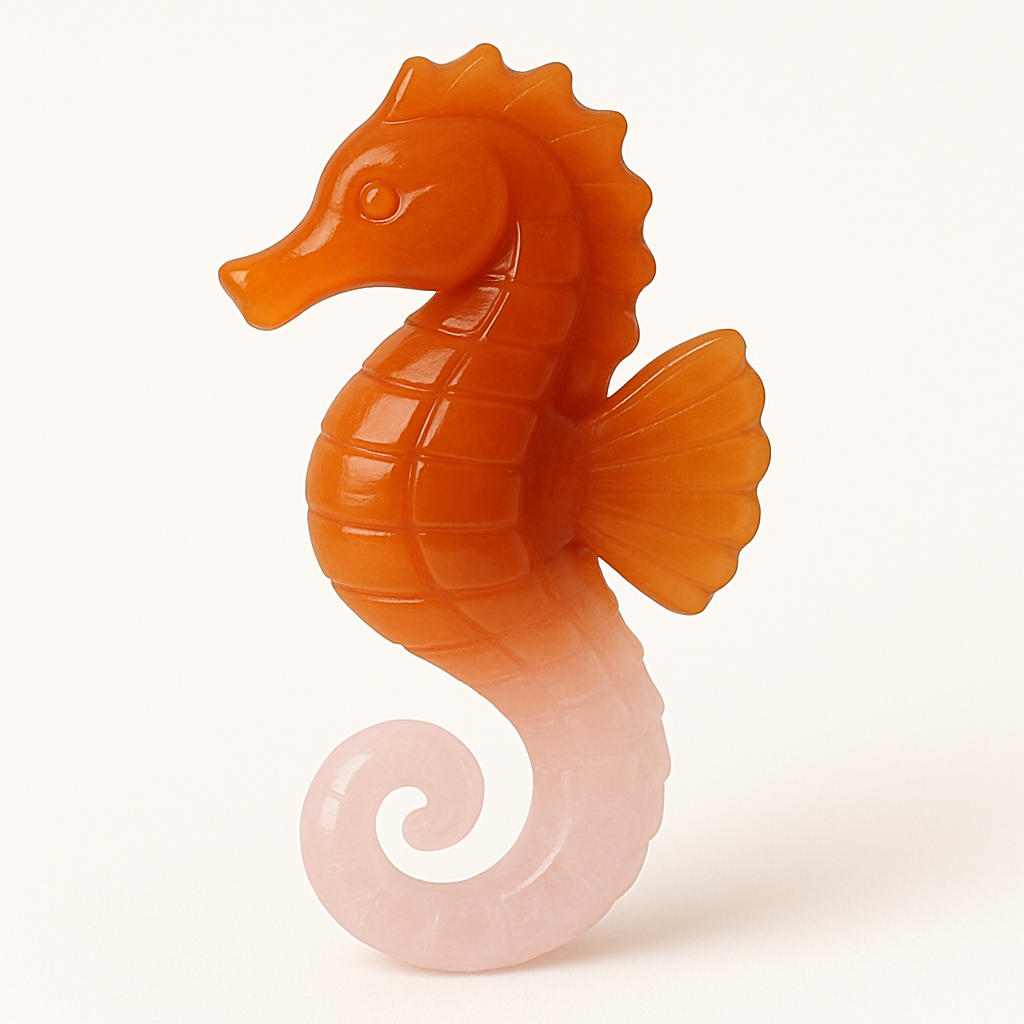
The Symbolism of Seahorses
Share
Graceful yet armored, delicate yet resilient, the seahorse drifts through ocean currents with a stillness that commands no attention—but holds profound meaning. Unlike most, it swims upright. Unlike most, it is the male who carries life. The seahorse is an emblem of gentle guardianship, nonlinear motion, and the strength found in quiet reversal of expectation.
To contemplate the seahorse is to encounter the archetype of balanced polarity, of protection without aggression, and of the mystery of sacred roles reimagined in still waters.
The Gentle Keeper in Cultural Memory
In ancient Mediterranean cultures, the seahorse was linked with Poseidon, god of the sea. It was believed to guide the souls of sailors who perished in the deep, not as a fierce guardian but as a calm conductor into peaceful realms. This gave the seahorse an association with safe passage, spiritual escort, and continuity between seen and unseen.
In Chinese symbolism, the seahorse is considered a type of sea dragon, a bringer of good fortune, protection, and perseverance. It is revered not for size or speed, but for steadiness and serenity in the fluid dance of life. Its appearance was believed to bless journeys, especially those carried across emotional or elemental waters.
Across mythologies, the seahorse is never dominant—yet never vulnerable. Its power lies not in display, but in authentic function, in embodying uniqueness without apology.
Stillness, Devotion, and Reversed Roles
The seahorse does not rush. It clings to strands of sea grass with its tail, anchoring itself while currents flow around it. It teaches that movement is not always forward, and that stillness can be an active engagement with one's environment.
Its most distinct expression of polarity lies in reproduction: it is the male who carries the young. In this reversal, the seahorse becomes a living example of shared responsibility, of masculine energy expressing through nurturance, not control.
Its upright posture reflects dignity without dominance, and its intricate form speaks to a kind of sacred geometry in miniature—a body formed not for battle, but for equilibrium within the great ocean of sensation.
The seahorse teaches that strength may be gentle, presence may be soft, and that care itself is a form of spiritual intelligence.
Resonance with the Energy Centers
The seahorse resonates primarily with the orange-ray energy center—the sacral chakra, which governs creative flow, emotional polarity, reproductive energy, and the dance of roles between self and other.
This orange-ray is not chaotic—it is balanced, sensitive, and fluid, allowing for an exchange of care that is free of expectation or hierarchy. The seahorse carries life not as burden, but as devotion, reminding that creation and intimacy are sacred when grounded in equality.
There is also a secondary resonance with the green-ray energy center—the heart chakra, which governs compassion, gentle protection, and the harmonization of polarity through love.
The seahorse’s role in the sea is subtle, non-predatory, and relational. Its interactions with mates are bonded, and its stillness is not avoidance—it is attunement. It teaches that love does not chase—it holds, stays, and creates space for safety to emerge.
Together, orange and green flow through the seahorse as:
nurturing polarity,
gentle devotion,
and the courage to care in a world of movement.
The One Who Guards Through Stillness
To walk—or float—with the seahorse is to learn that true strength may arrive in quiet form, and that the reversal of expected roles can be the very healing the system requires. The seahorse invites the seeker to hold space, to care without possession, and to honor the dance of polarity with humility and grace.
The seahorse does not swim fast.
It clings gently and stays aware.
It does not command the ocean.
It lives in harmony with its pulse.
It teaches:
Let care be strength.
Let stillness be service.
And let love move through the unlikeliest forms.